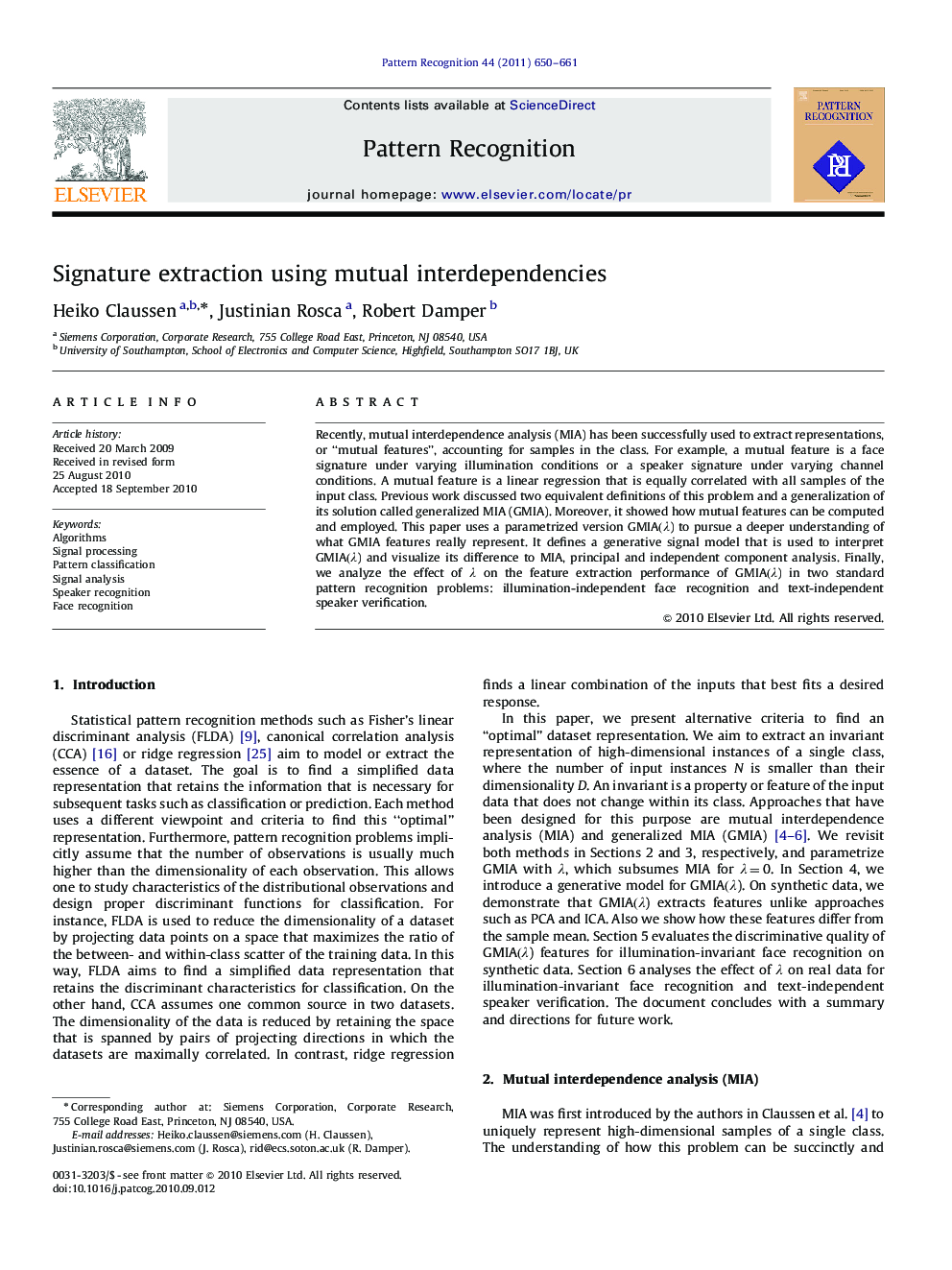| Article ID | Journal | Published Year | Pages | File Type |
|---|---|---|---|---|
| 532495 | Pattern Recognition | 2011 | 12 Pages |
Recently, mutual interdependence analysis (MIA) has been successfully used to extract representations, or “mutual features”, accounting for samples in the class. For example, a mutual feature is a face signature under varying illumination conditions or a speaker signature under varying channel conditions. A mutual feature is a linear regression that is equally correlated with all samples of the input class. Previous work discussed two equivalent definitions of this problem and a generalization of its solution called generalized MIA (GMIA). Moreover, it showed how mutual features can be computed and employed. This paper uses a parametrized version GMIA(λGMIA(λ) to pursue a deeper understanding of what GMIA features really represent. It defines a generative signal model that is used to interpret GMIA(λGMIA(λ) and visualize its difference to MIA, principal and independent component analysis. Finally, we analyze the effect of λλ on the feature extraction performance of GMIA(λGMIA(λ) in two standard pattern recognition problems: illumination-independent face recognition and text-independent speaker verification.
